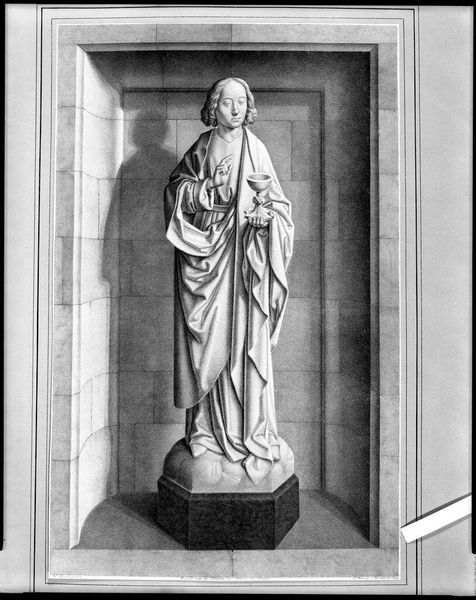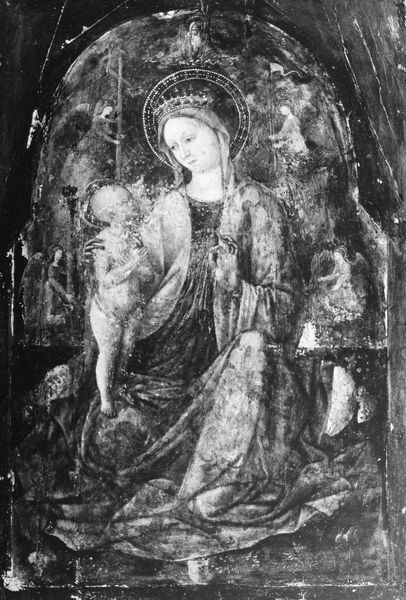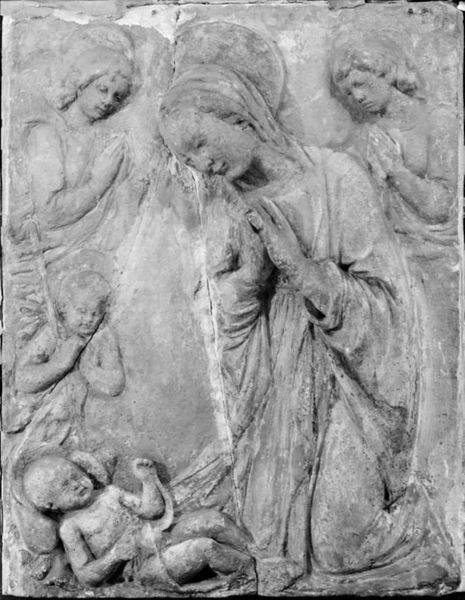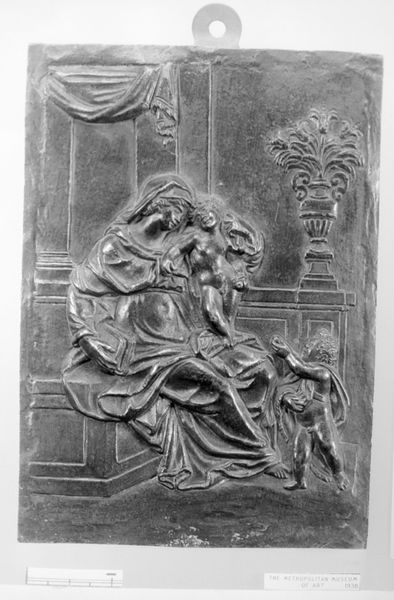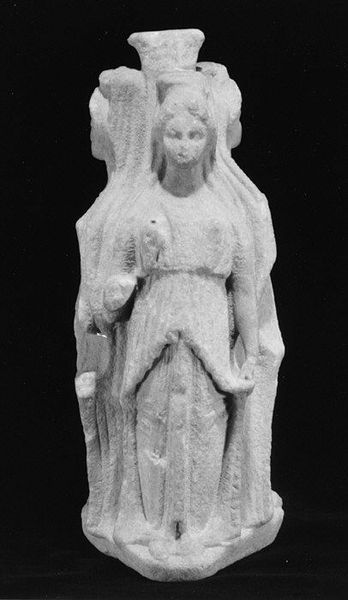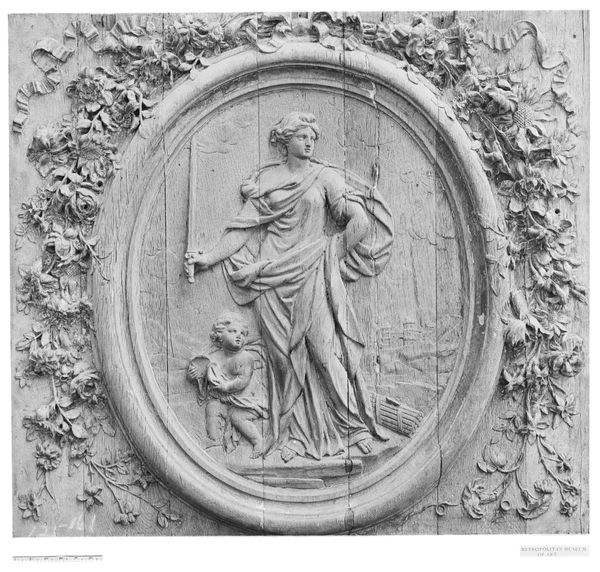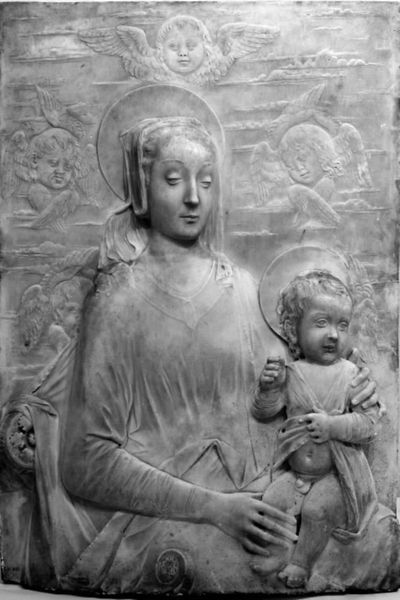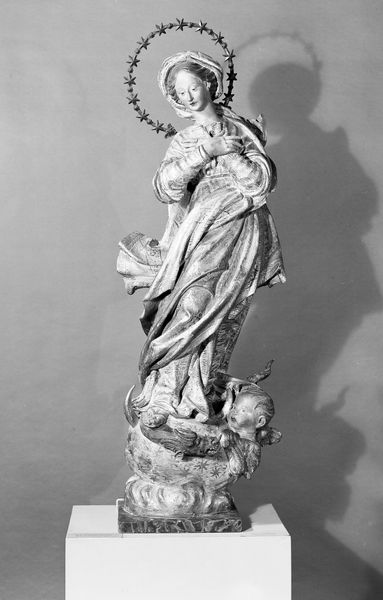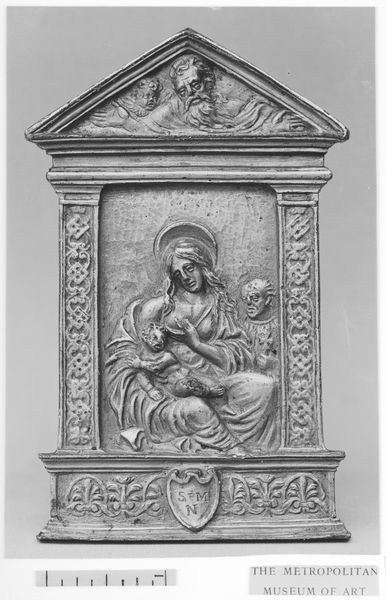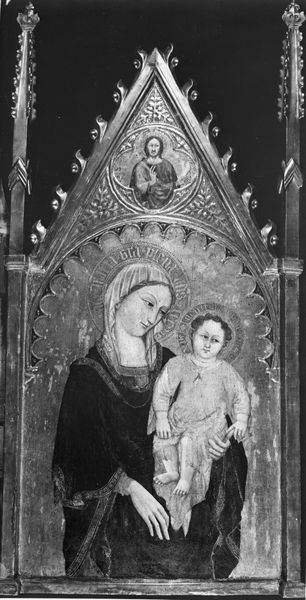
tempera, relief, photography, sculpture, marble
#
portrait
#
tempera
#
sculpture
#
relief
#
photography
#
sculpture
#
marble
#
italian-renaissance
#
virgin-mary
Dimensions: 13 3/16 x 6 13/16 x 5/8 in. (33.5 x 17.3 x 1.6 cm.)
Copyright: Public Domain
This silver panel of the Virgin and Child was made by Francesco Marti in Italy, likely Florence, in the early 16th century. While we don't know the exact circumstances of its commission, the image of the Madonna and Child was ubiquitous in the Renaissance. Such images operated on several levels. They were devotional objects, offering a focal point for prayer and contemplation for the increasing number of people who prayed at home. But they also served as statements of wealth and taste. The precious materials and refined craftsmanship evident here attest to the patron's social standing. The Virgin's modest gaze and flowing drapery are visual cues that speak to her purity and grace, reflecting contemporary ideals of feminine virtue. The haloes denote the holy status of the figures and the panel’s floral decorations are reminiscent of illuminated manuscripts, connecting it to a tradition of sacred art. Understanding the iconography and cultural context of Renaissance art allows us to appreciate how art reflected and shaped social values. Through meticulous research into patronage records, religious texts, and social histories, we can better understand the complex layers of meaning embedded in objects like this.
Comments
No comments
Be the first to comment and join the conversation on the ultimate creative platform.
